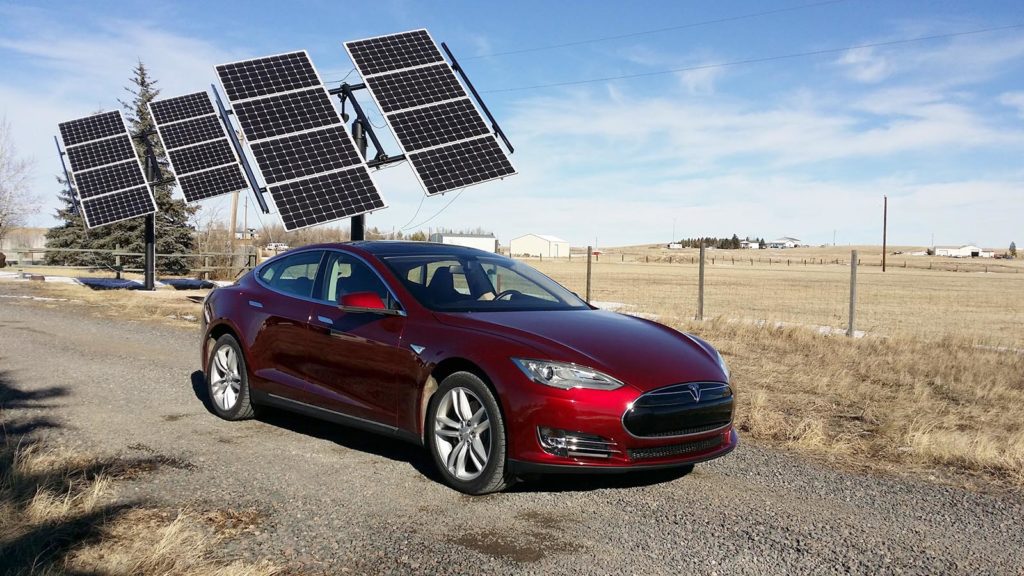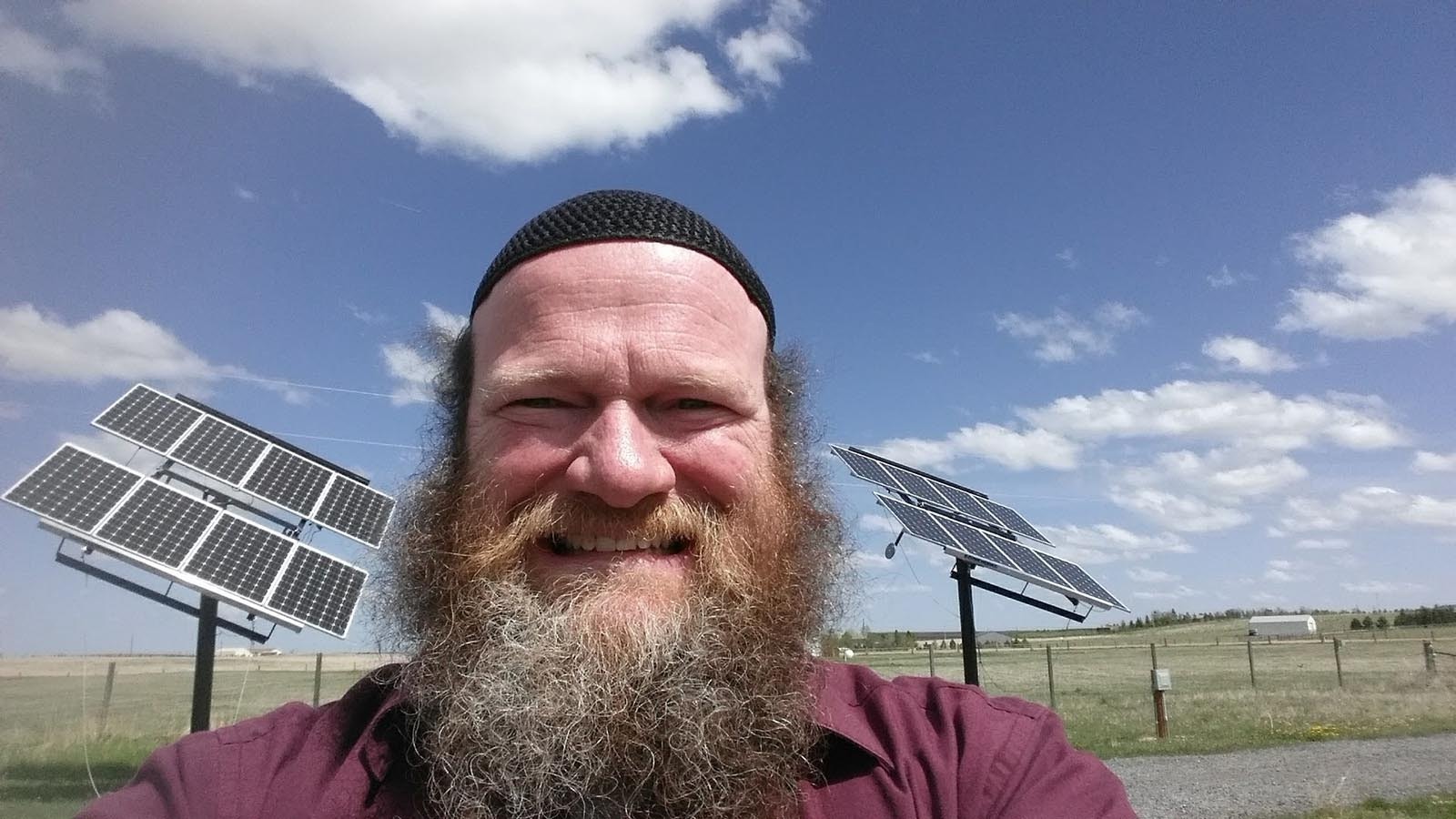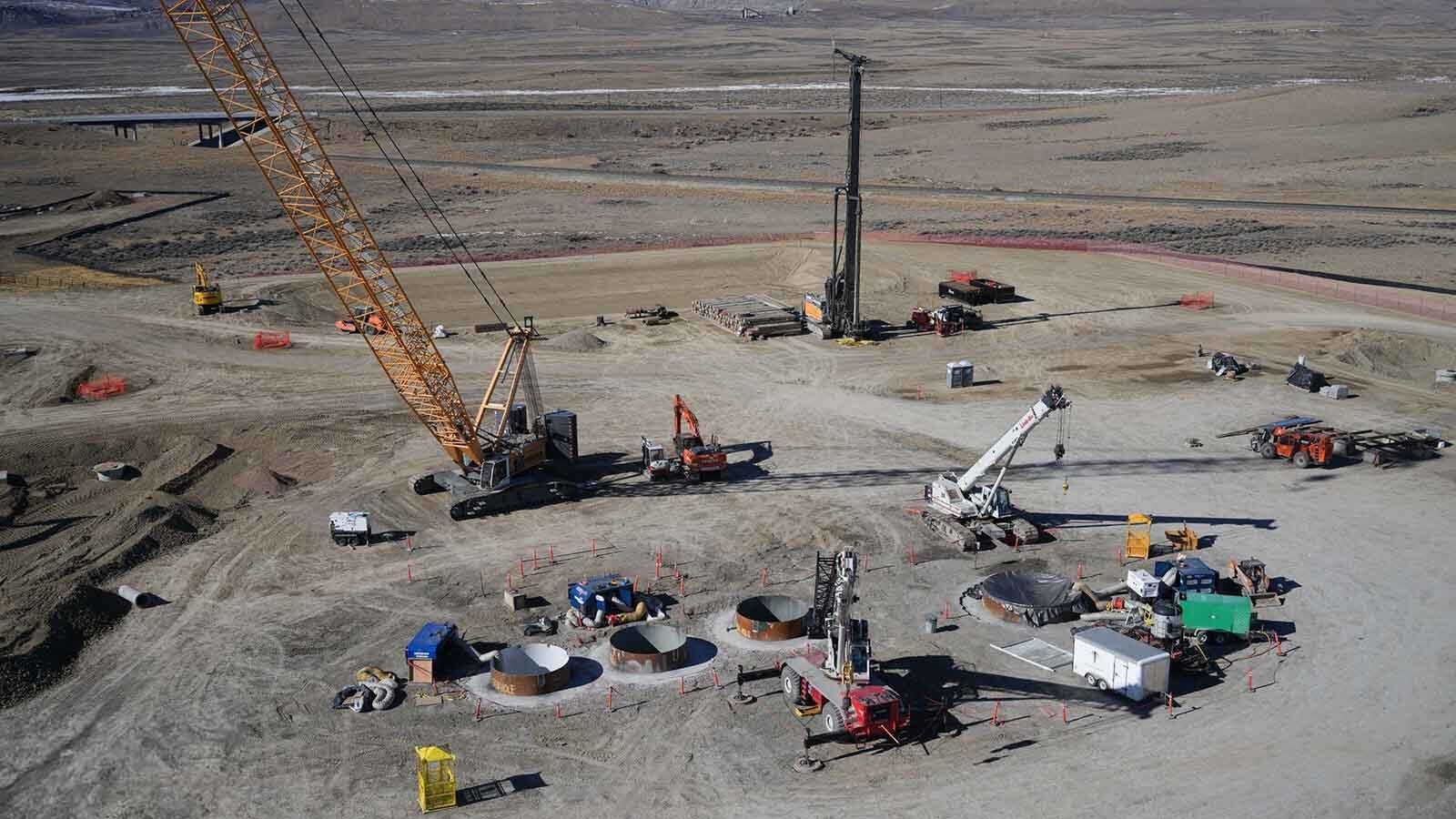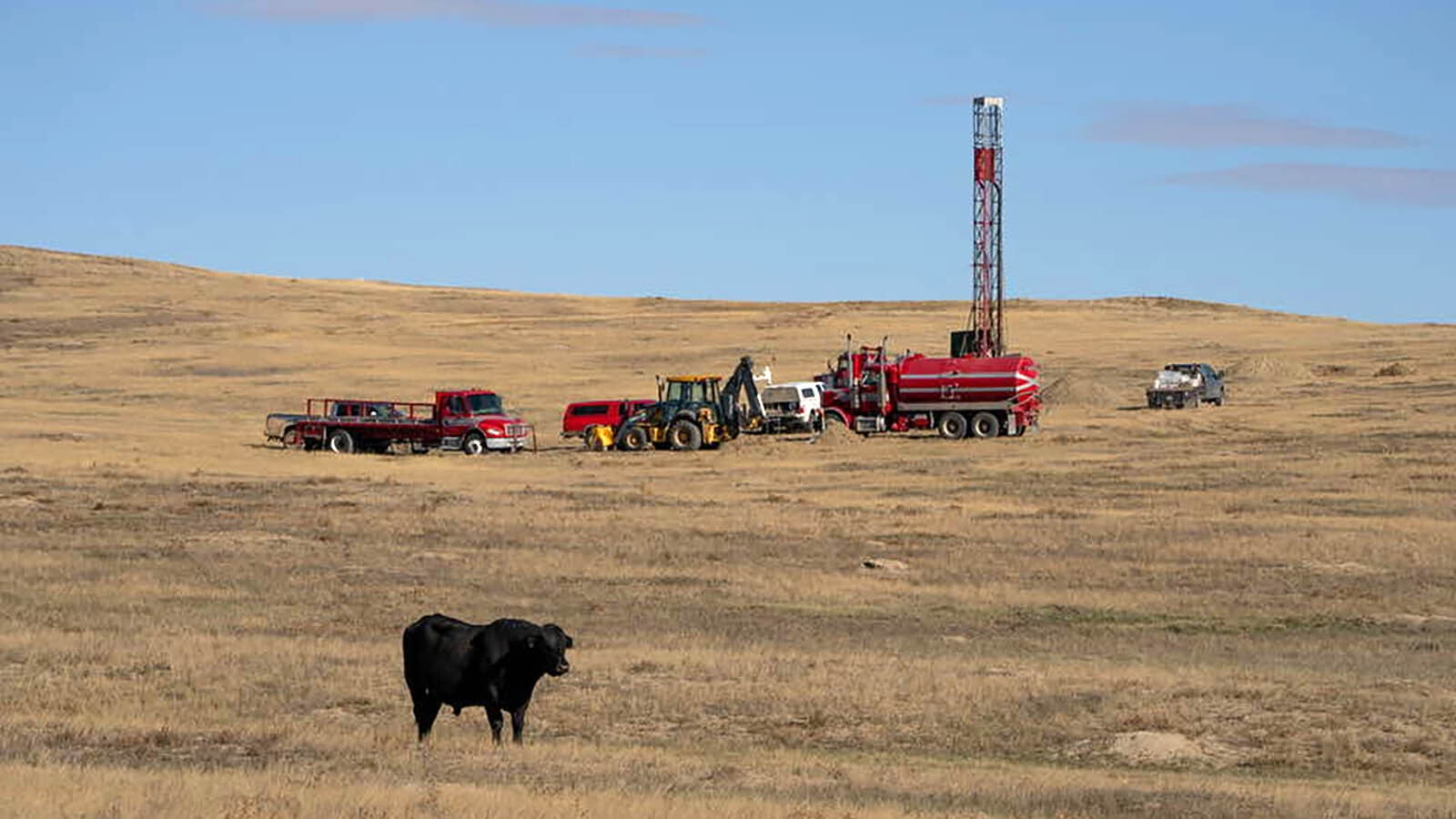By Kevin Killough, State Energy Reporter
Kevin@cowboystatedaily.com
Dr. Jason Bloomberg has a commitment to renewable energy.
The overnight inpatient hospitalist for the Veterans Administration powers his entire home in a rural area east of Cheyenne, along with a pair of electric vehicles, with wind turbines, solar panels, a Tesla Power wall and direct solar for water heating.
While his embrace of wind, solar and EVs is an outlier in the Cowboy State, Bloomberg, who has lived in Wyoming since 2001, feels right at home here.
“That’s called capitalism. I look at this as being really consistent with the real values of Wyoming, where people get to make personal choices and are not ordered by government to patronize a specific industry,” Bloomberg said.

Right Tools
Bloomberg reached out to Cowboy State Daily after reading about his friend Alan O’Hashi’s 15-hour EV trip over a couple of days from Cheyenne to Casper in a Nissan Leaf.
Bloomberg said that experience isn’t indicative of all EVs and that it’s a matter of having the right tools for the job. The Leaf has a number of charging limitations, and O’Hashi’s story was about a novice EV owner learning the ropes of the vehicles.
O’Hashi wrote a book about the experience, and it uses self-deprecating humor to tell the story.
But Bloomberg said it doesn’t tell the full story of what it’s like to take an EV on road trips.
Computer-Aided
How long would it take Bloomberg to travel from his home to Cody in his 2012 Tesla Model S Signature Edition?
“Well, let’s find out,” Bloomberg said. He then told the car’s computer to navigate to Cody, and it spits out a route, along with charging stops, for a trip of 8 hours — about one more hour than it would take in a gas-powered vehicle.
Since Cody doesn’t have a Tesla Supercharger station — which provides free, 20- to 30-minute charging for Tesla owners — Bloomberg brings up an app on his phone to see where he could charge up the Tesla in Cody for the trip home.
There are several slow-charge options, including Michael’s Tacos. With a few hours’ charge at one of the options in Cody, he would have enough juice to get to Sheridan, where he could do a fast-super charge.


Sweet Ride
Bloomberg also drives a 2018 Tesla Model X 100 D, which is considerably more advanced than the Model S.
On a drive around Cheyenne, he pulls onto Interstate 25 slowly up the ramp at about 25 mph. Less than three seconds later, he’s going 65 mph, pinning driver and passenger to their seats.
The car’s software will guide it along the road. It reads road signs, can see other cars and stop at red lights. It also will slow down as it approaches other vehicles, anticipating the need to stop.
Bloomberg has to keep hand pressure on the steering wheel, and if he lets go for too long, the software will warn him he needs to pay attention.
The software is in beta now, meaning the company is still working out bugs and doing updates. For example, the car doesn’t do well on gravel roads, and it likes to drive into the left turn lanes when it should be going straight.
Whenever that happens Bloomberg takes over control.
Bloomberg is part of a Tesla program in which safe drivers can report when the car doesn’t behave properly. When it slides into the left turn lane, Bloomberg pushes a button on the control screen, which provides the company with all the data, including a camera and driver’s inputs, so that the software engineers can improve the code’s performance.
“This car has had probably 30 updates over the years,” Bloomberg said.
Not His First Electric Rodeo
Previously, Bloomberg had a Porsche that was converted from gas to electric. He calls it a “lead sled.”
“It had 18 lead-acid batteries in it, and that’s a lot to carry around,” Bloomberg said.
It had a range of less than 30 miles, but he could use it to commute to work.
He also previously had a Prius hybrid, meaning it runs on gas or electricity to greatly increase gas mileage. He replaced the battery in it with a Nissan Leaf battery pack and charger.
“I would burn about seven gallons of gas the entire year, mostly in winter,” Bloomberg said.
One day, he came out to the Prius, which was parked in his carport, and smelled something burning. There was black smoke coming out of the tail light and the windows were all blacked out.
He had just filled it up with gas, and since everything is electronic, he couldn’t open the doors or disengage the parking brake. A smoldering car full of gas was a potential explosion in his carport.
“So I fired up my tractor and put a chain on the car and dragged it out the middle of our driveway,” Bloomberg said. “It was the end of the Prius.”
After that he decided he wanted vehicles that are factory built with factory warranties. He used the insurance payout from the Prius for the down payment on his Model X Tesla.
“Frankly, Tesla kind of ruined custom cars for me,” Bloomberg said.
Small Solar and Wind
Bloomberg has a home solar and wind electric power plant to charge up his Teslas and run everything in his house. The three solar arrays and four small wind turbines can produce 18 kilowatts of power. Of course, the wind doesn’t always blow and the sun doesn’t always shine.
The turbines need a wind of 6 mph to start turning and 12 mph to produce any meaningful power. They’re optimal with winds of 27 mph.
“We get some pretty good winds out here,” Bloomberg said.
The solar panels need sunshine and will pivot to face the sun. Bloomberg said that during the winter, when the hours of sunlight in the day are lowest, the winds are highest.
When he produces more power than he uses, whether it be from solar or wind, he fills up his Tesla Powerwall. Fully charged, it provides about 135 kilowatt hours, which is 13,000 watts for one hour.
One could power a 100-watt lightbulb for 130 hours with Bloomberg’s fully charged Powerwall.
When he produces more power than he uses, his smart metering system sells it back onto the grid.
For hot water, he has his rooftop solar and a heat pump, which draws heat from pipes running through the ground.
Since his house is all electric, meaning all heat requires electricity, he has a backup generator that runs on propane. Bloomberg said he’s never had to use it.
Responding To Critics
In a state with a lot of traditional energy from oil, gas and coal, Bloomberg has heard plenty of criticisms of wind and solar. One is that by getting his electricity from wind and solar, he’s not supporting oil, gas, and coal.
“If I didn’t drink, I’m not supporting the alcohol industry. And if I don’t smoke — and I don’t smoke — I’m not supporting the tobacco industry. It’s part of free choices, choosing which things you want to spend your earnings on,” Bloomberg said.
Though it cost more money than going with companies in northern Colorado, Bloomberg said he used Cheyenne-based WyCO Wind and Solar to install and maintain his panels and turbines.
“We contributed substantially to Wyoming’s economy by hiring local people, from local companies,” he said.
Bloomberg also said he gets faster service than he would from an out-of-state company.
The entire system wasn’t cheap. He said it cost more than the house itself. However, he said that as a physician, he could afford it. And so he wants to stay true to his beliefs and values.
“We’re trying to live our values and walk our talk in terms of reducing our contribution to carbon emissions,” Bloomberg said.





